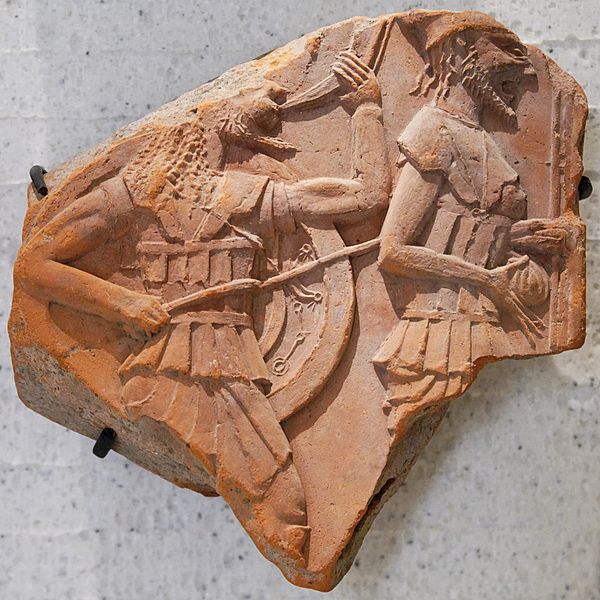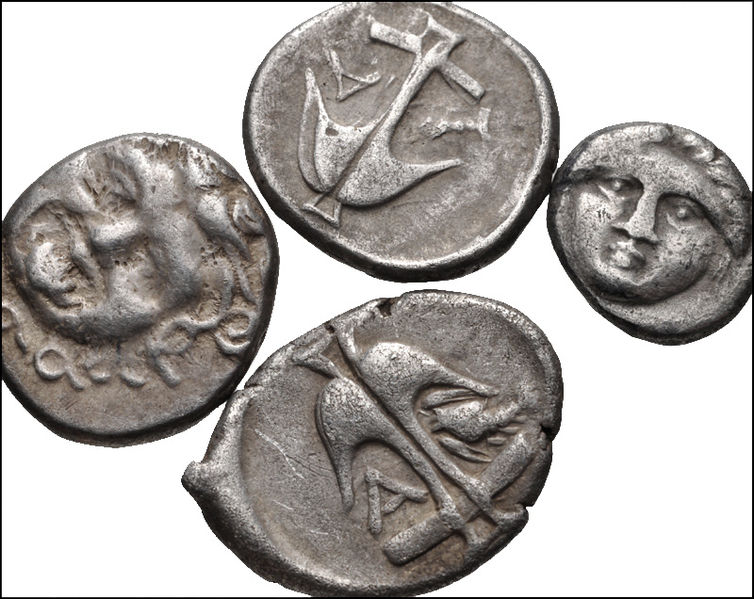Overall, and histrionically speaking, they were the most “cool under fire” military that ever existed.
ATHENS, July 1 (Xinhua) — A group of Greek scientists including engineer Alexandros Oikonomidis made a successful test this weekend, firing a replica model of the ancient steam cannon designed by Archimedes of Syracuse (287-212 BC), the ancient Greek mathematician, physicist, engineer and inventor.
The test was carried out in a field at Koropi, a suburb of Athens. Original cannon had been used to defend the city from invading Romans (213-211 BC). The replica model was constructed four decades ago by Oikonomidis’ late colleague Yannis Sakkas.
Centuries before him, Leonardo da Vinci had also reconstructed Archimedes’ war device, according to scholars.
The steam cannon basically consists of a metal tube. One end of the tube is capped while the other is loaded with the projectile. Once the tube is heated and reaches high enough temperature, a small amount of water is injected in behind the projectile. It rapidly turns into high-pressure steam, blasting the projectile out of the barrel.
A projectile of about 6 cm diameter reached some 30 meters on Saturday, far less than the over 1,000 meters the ancient steam cannon larger in size could reach. Still the mission was accomplished.
Oikonomidis, assisted by Yorgos Sakkas, the son of the late engineer, and other Greek experts, proved once again that the design of the machine is working and simple ideas can make great difference.
“This is a replay of an experiment made by my colleague and friend Yannis Sakkas 37 years ago. He worked based on a manuscript discovered in the archives of the great inventor, engineer, mechanic, architect and artist Leonardo da Vinci,” Oikonomidis told Xinhua before the test.
“Among these archives there were three sketches depicting da Vinci’s version of the steam cannon Archimedes had invented to target the Roman ships which had gathered around Syracuse,” he said.
“He (Sakkas) wanted to prove that Archimedes’ achievements, as narrated, were not legends but the crystal clear reality,” Oikonomidis added.
Oikonomidis undertook the task of tearing apart, repairing and putting together again the 1.2 meter-long device which had been left aside in a warehouse for years.
Saturday’s experiment was carried out ahead of an exhibition on Ancient Greek warfare technology which will be hosted at the Herakleidon museum opposite the Acropolis hill from August 22, Pantelis Mitsiou, head of the museum’s marketing and communication department, told Xinhua.
“Basically we wanted to have a firing shot for educational purposes, to see how this device functioned in antiquity,” Mitsiou said.
“The idea is very simple. The aim is to create enough pressure inside the chamber so that it will blast the projectile to a distance,” he explained.
 Italian and Pakistani Archaeologists have discovered large layers of an Indo-Greek city with weapons, coins and pottery forms, in Barikot, Pakistan, according to a Dawn report.
Italian and Pakistani Archaeologists have discovered large layers of an Indo-Greek city with weapons, coins and pottery forms, in Barikot, Pakistan, according to a Dawn report.






HERCULES (SORT OF)
Jul 29
Posted by occu77
I went to see Hercules this afternoon. I needed a little work break and since I was already ahead of schedule I decided to relax and go see the film.
I thought about writing up a standard movie review and posting that, but after seeing the film I decided against that approach and idea.
First of all let me say this in regards to the film; it was nothing like I expected.
I had expected a rather simple-minded and plodding-plotted ass-kicking action film. And it certainly had its moments of fine action sequences. From the previews, and knowing nothing of the graphic novel(s) on which it is based (I purposely avoided reading them to be ignorant of the storyline), I had expected an upgraded and far more upscale Conan type of movie with Hercules serving as the mythologized version of Conan as the super-strong monster-slaying, justice-inflicting hero.
It certainly started out that way, as a slightly upscale version of that last (horrible) Conan film.
But it quickly evolved into something else that I did not expect at all and so I was confused by the first 20 minutes or so of the film. After that things began to solidify and I began to perceive the direction in which it was moving.
After the film was over (and I had originally expected little more than an exciting and hopefully enjoyable diversionary entertainment) I was actually left thinking. Not by the obvious and overt and easy to read statements of the film, or the rewriting of Herculean mythology in an attempt to make him into a modern man, but of the fact that Hercules and his entourage were all perfectly modern men by their very nature. Modern men who had to overcome their own modernity to become worthwhile people.
Hercules was indeed a “modern man” for a reason I shall not mention (to avoid spoilers – but it had nothing to do with him being a mercenary) but that was perfectly explained by the ending lines and post-film animations. Yet otherwise (or on the other hand) Hercules was a lion-skin wearing, war-club wielding (an ancient weapon and motif) throwback to an age of chivalry. Or the Greek version of pre-chivalry. And in many respects this is the very Hercules of actual mythology. People tend to forget that Hercules is this lion-skin wearing beast-killer who is also driven so mad by a petty and vindictive and vain goddess that he becomes a killer-beast. So the lion skin serves much the same function as sack-cloth and ashes to the ancient Prophet. Yet when not driven mad by Hera or hounded by monsters Herakles is the very model of Greek Chivalry and self-sacrifice and heroism. Or in any case as close as the Greeks ever got to the ideal on a personal level. For Hercules is almost the polar opposite of Achilles, the semi-divine who would be considered a god by setting loose his own Furies in war for personal glory, whereas Hercules is the demi-god who wishes to overthrow the misguided and often pathetic tyranny of the gods themselves, and by so doing end the typical Greek ideal of glory. This is shown in the ceiling mural scene near the beginning of the film. Hercules does not aspire to be a god, he aspires to overthrow the gods.
So the more I thought on this the more interesting the film became. Not because of the overt clues about Hercules modernity (such as Hercules wearing the head of the lion as a prop that could not possibly be the real head of the Nemean lion), but because of the underlying and prophetic mythological ones.
But the Thracians were also perfectly modern men, but in a manner much easier to recognize. Easily shaped and molded they immediately fell under the sway and vassalism of whomever claimed political power. Despite the fact of who obviously was most concerned with their welfare and despite the fact of who trained and developed them, they bent the knee immediately to any and every tyrant who gave them orders. They were easily “enthralled,” in the way modern men are usually easily enthralled, be they Germans under Nazis, or more recent modern men completely passive and subservient to their elected governments.
Rather than rising in revolt against the obvious tyrant all they could or would do was fall in line with whoever sought to command or control them.
In this respect Hercules was very much an essay on modern men, on how easily and passively they bend the knee to that tyrant who dares to command them.
So in both those respects the more I think upon the film the better I like it.
But it was not what I expected to see or hear, at all, when I first walked into the theater.
It was not an action and adventure entertainment dressed in ancient Greek garb, but rather a more subtle and political exposition on both the cynicism and perceptions of modern men and on their inherent weaknesses of character and nature dressed in the garb of Greek mythology.
And in that respect I thoroughly enjoyed it.
That might seem a strange review for such a film, but in many ways it was a very strange film.
Share this:
Posted in Action-Adventure, Commentary, Entertainment, Film, MY WRITINGS AND WORK, Myth, Review, Uncategorized
Leave a comment
Tags: blog, Conan, film, Greek, Hercules, heroism, modern man, monster, myth, review, the gods, writing